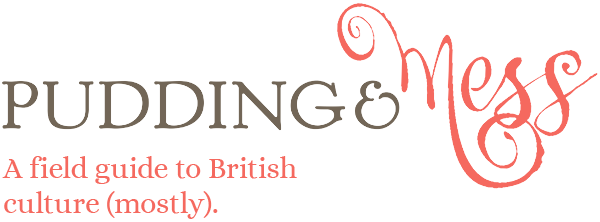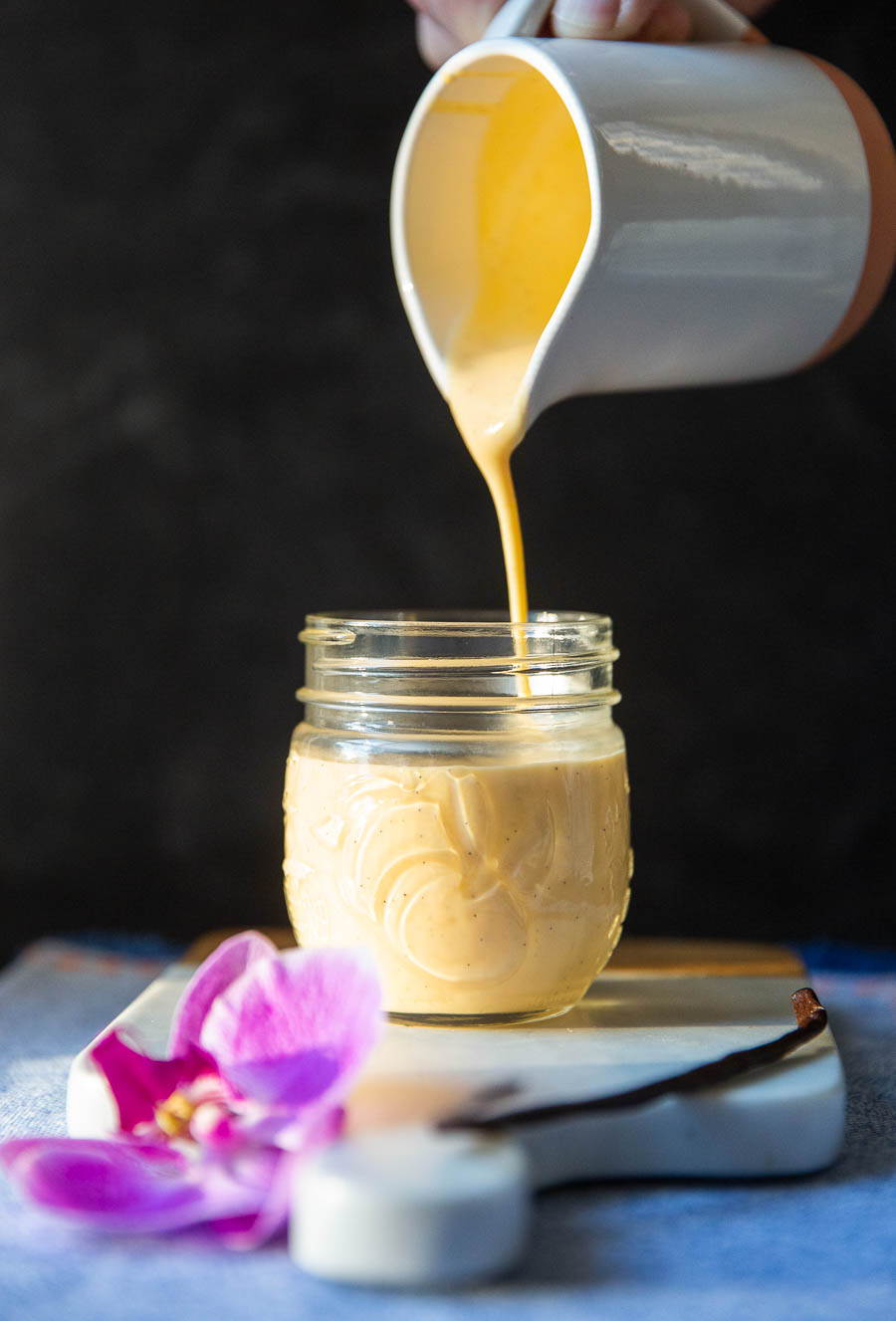Custard in its most simple form is a mixture of eggs and milk, gently heated so that the eggs can provide the necessary thickening. Possibly around since Ancient Rome, but certainly finding its groove in the Middle Ages, the word “custard” is thought to come from the French word “croustade” meaning pastry crust, because custard was frequently baked into tarts.
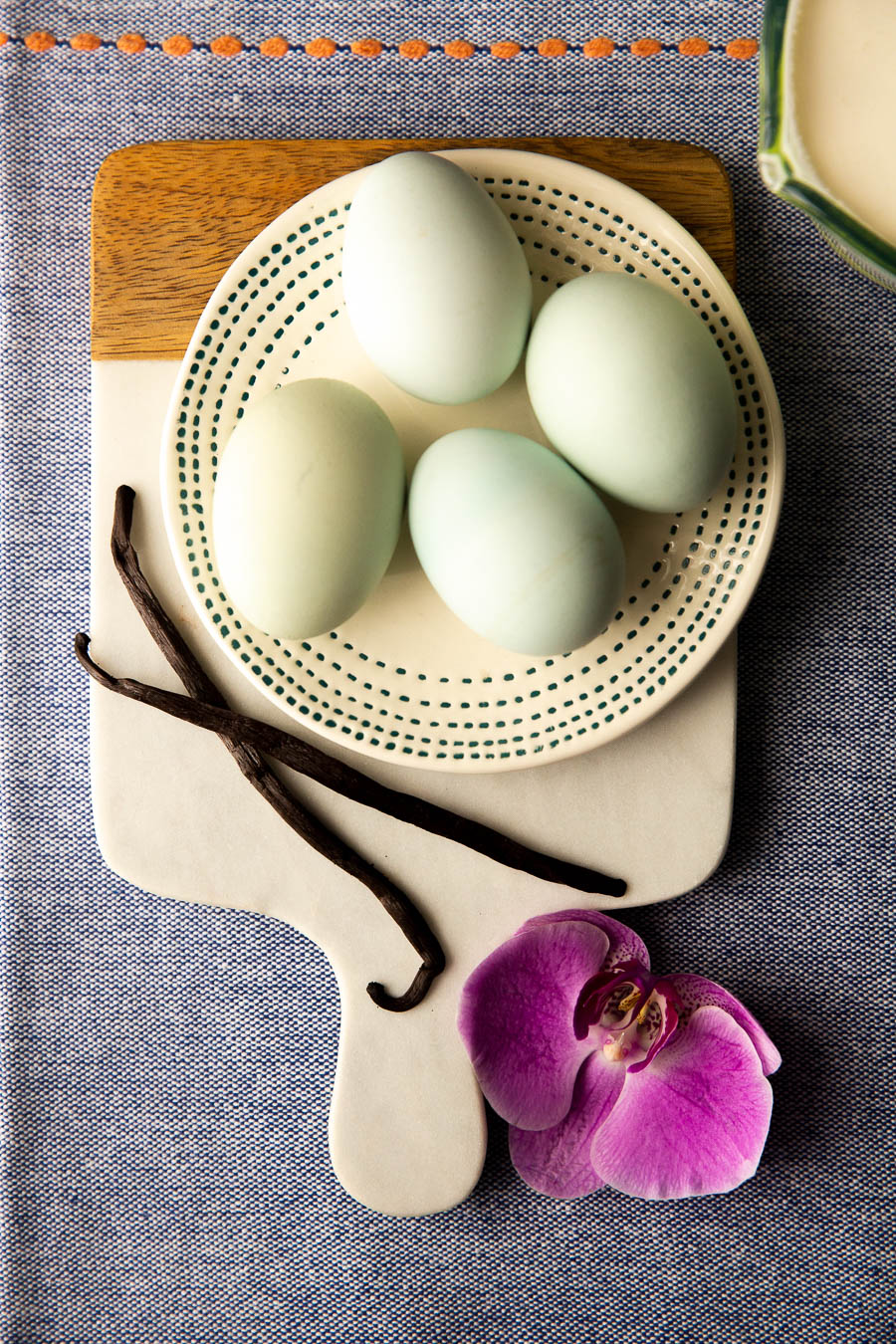
But custard has a variety of guises. Freeze it and you have ice cream. Put it in a crust with savory flavorings and you have a quiche. It serves as the base for creme brûlée, chocolate pudding, flan, and creme caramel. Stir it into whipped cream and you have crème chibouste. Add starch and you have crème patissiere which fills eclairs and profiteroles and Boston cream pie. It can be baked in the oven or cooked on the stovetop. And let’s not forget the starring role it plays in trifle. Or poured over crumble. In other words, it is ridiculously versatile.
Custard is both easy and difficult to make. The process itself is incredibly simple: achieving the perfect custard is trickier. Success arrives in the form of an incredible silky-smooth sauce. Err just a smidge and you find yourself with a curdled rubbery mess.
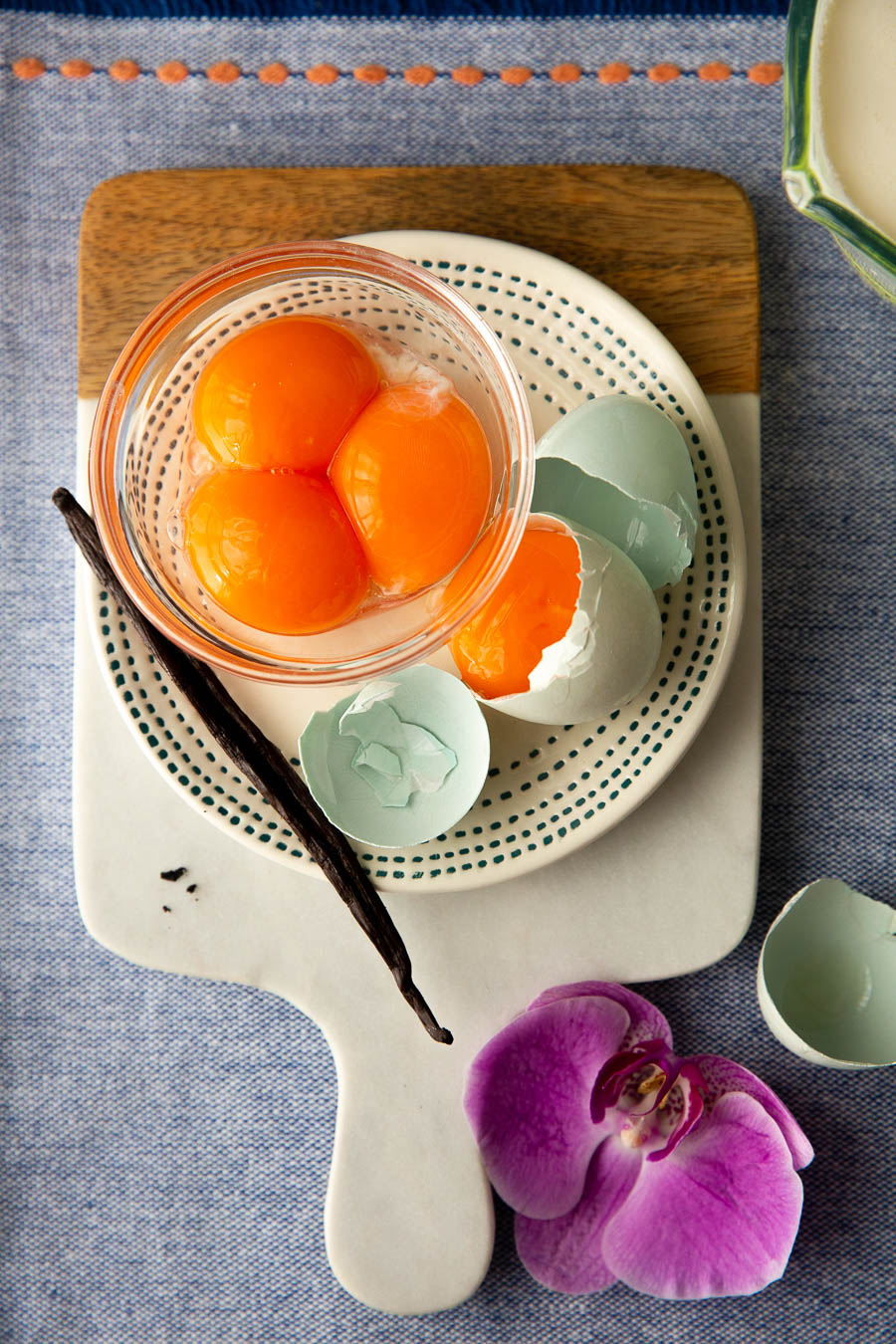
The easy bit of custard is the actual process. Egg yolks are lightly whisked with sugar while cream is brought to a simmer. Some of the heated cream is then poured into the yolks to temper them (essentially warming up the yolks slowly so they don’t scramble) and then everything is put back on the stove and heated gently until it thickens. That’s it. A process which takes about 15 minutes from start to finish.
The tricky part comes with the heat applied to the egg and cream mixture, so it helps to understand a little of the science behind the process. In raw form, egg proteins are coiled and folded up. As the egg is heated the proteins unwind, detach and elongate and then, as the heat continues to increase, they reattach to each other to thicken the mixture. Use too high of a heat and coagulation will occur too quickly and you end up with dry rubbery bits.
It’s also necessary to stir continually in order to distribute the heat evenly. Stop and the proteins on the bottom of the pan will heat too quickly and you’ll end up with scrambled eggs.
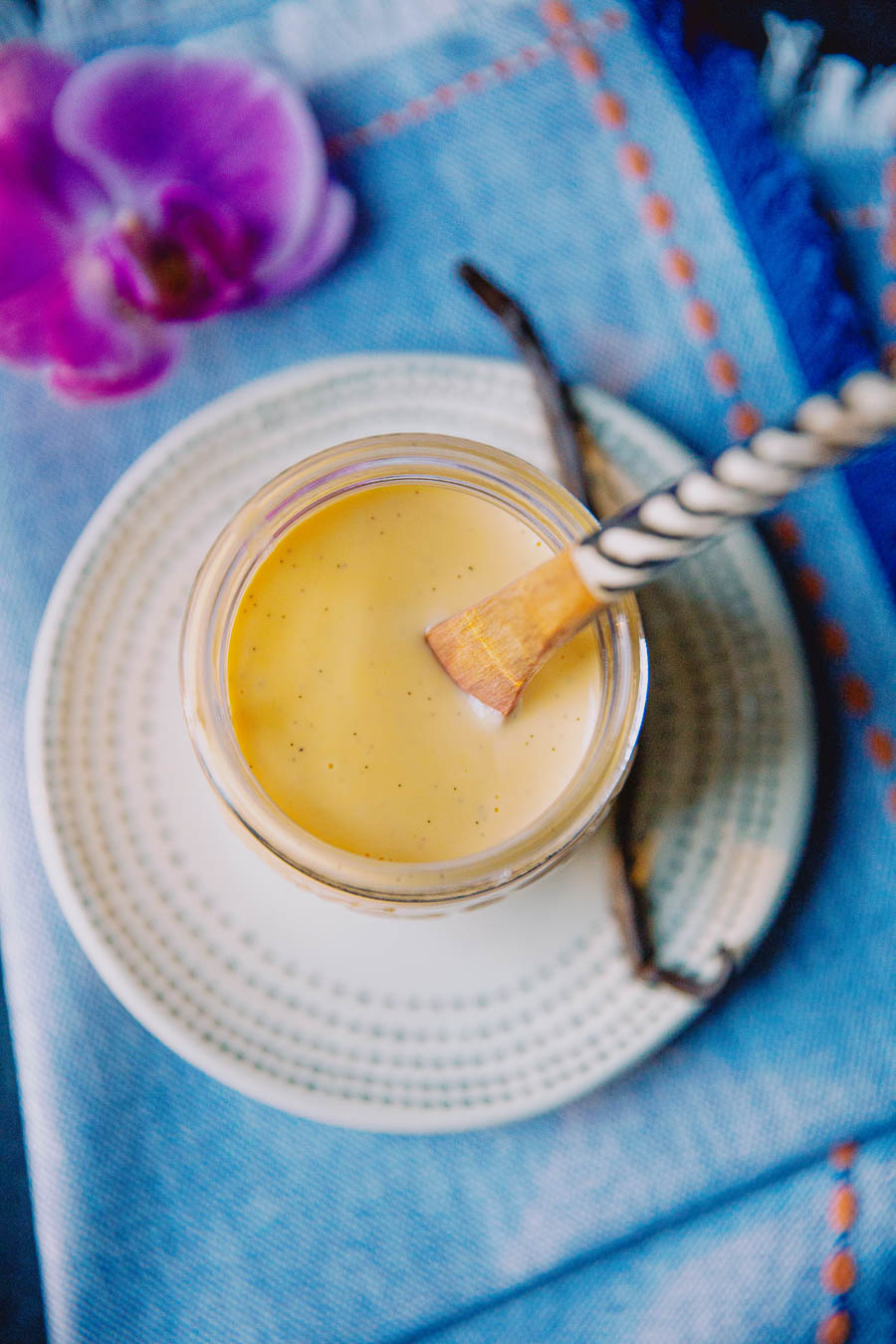
Heating the eggs gently also allows the strands of protein to collect moisture as they reconnect, which makes custard so smooth. If heated too long, the egg proteins lose their shape along with their ability to hold that liquid, so the mixture reverts to being runny and will also curdle.
When the custard has thickened nicely, it will coat the back of a spoon and leave a line when you run your finger through it, as you can see below.
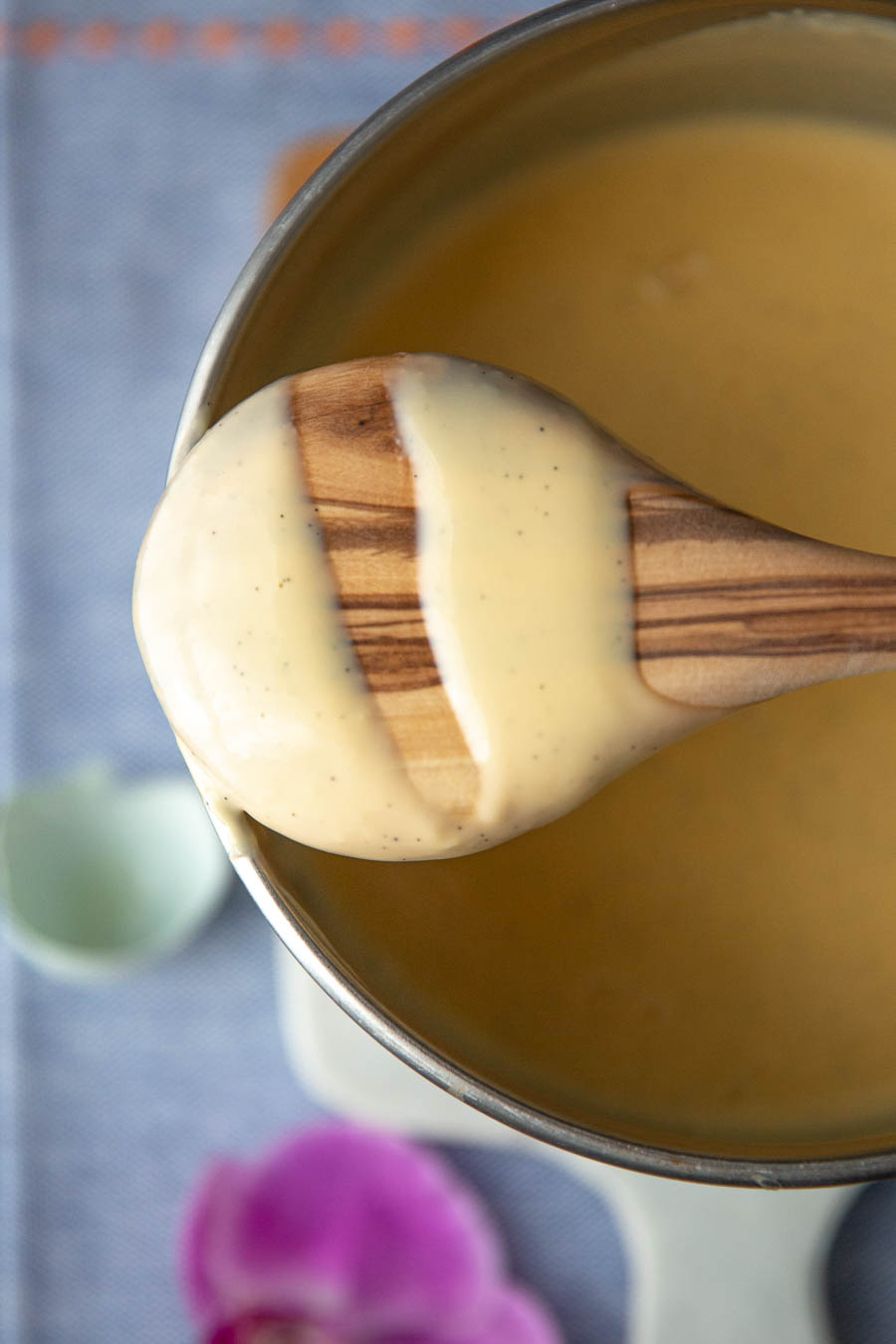
So, three important things: heat slowly, stir continually and don’t heat for longer than necessary. Beyond that, experience is best; the more you make custard, the more you get a feel for it and given its versatility, it’s well worth the effort.
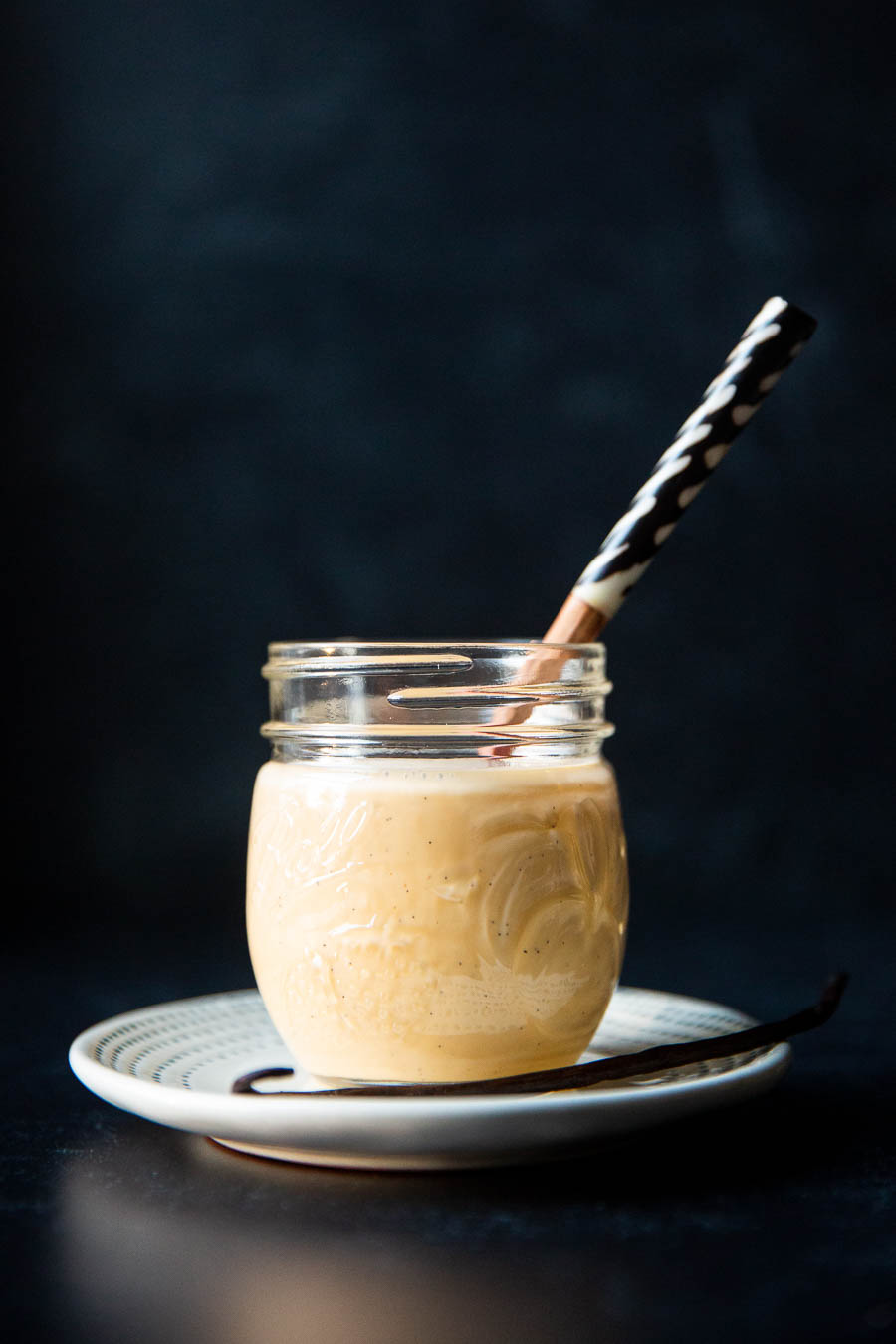
Patience is golden, my friends, and in this instance patience results in a deliciously creamy bowl of golden custard.
Custard
- egg yolks, 4
- sugar, 1/3 cup
- whole milk/cream,* 2 cups
- vanilla bean, split, or 1 tsp vanilla
- Put the egg yolks into a medium sized bowl and whisk together with the sugar.
- Put the cream and whole milk into a medium saucepan and bring to a simmer. If you’re using a vanilla bean, slice it open, scrape out the seeds and add it to the pan as it warms and then let it sit for 10 minutes or so to infuse the milk, longer if you like, you’ll just need to warm it up again.
- Once the cream/milk has heated sufficiently (there should be small bubbles forming around the outer edge) slowly pour half of it into the yolks. (At this point I like to whisk the eggs for about 15 seconds to make sure the eggs have fully adjusted to the heat before I put them back on the stove).
- Tip the egg/cream mixture back into the saucepan and heat gently, whisking constantly. (I generally use a heat level half way between low and medium)
- After about four minutes you’ll feel a slight thickening. Resist the urge to turn up the heat if you’re feeling impatient. Generally, it takes about 8-10 minutes until the custard feels nice and thick. Around the four minute mark, when the custard has thickened ever so slightly, I always find myself instinctively switching to a wooden spoon to stir.
- When the custard has thickened nicely it will coat the back of the spoon and you can pull your finger through it (see picture). Do not let it come to a boil. Take off the heat and pour through a sieve into a bowl (I always do this because no matter how gentle I am with the custard there always seems to be a couple of lumps, as well as the chalazae, those little ropey bits which hold the egg to the shell wall.
- If you’re using vanilla extract, add it here.
- If you’re not using the custard immediately it’s best to cool the custard quickly, so I place the bowl into a bigger bowl filled with ice water, stirring every so often, a process which should take about 10-15 minutes. Then it’s ready to be covered and placed in the fridge.
*The recipe calls for 2 cups of milk/cream. I generally use 1 cup of each but you can definitely play around with the ratio. You can use any combination of 2% milk, whole milk and cream depending on the richness you prefer—just don’t use 1% or fat-free.
Should your custard look like it’s going to separate, the general wisdom is to take it off the heat and beat like crazy or use an immersion blender. I also will add in a little splash of cream so that the extra bit of fat can entice it back together again. I generally find that once custard has split it will never be ultra silky-smooth, but you can save it enough that most people aren’t going to notice.
